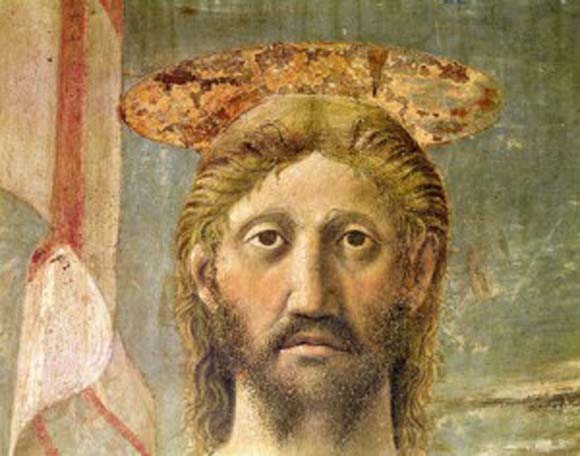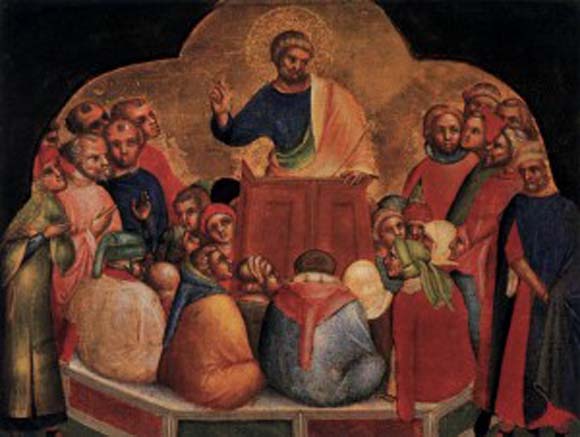
Jesus, Thomas and Us: Touching, Seeing, Believing and Proclaiming.
5.91k
John 20:24-31
Did Thomas put his finger(s) into the wounds of Jesus or not? I sometimes ask this question of people who would think they know this text well. Most people say ‘Yes!’ Certainly a lot of Christian art over the centuries supports this view, as well as many meditations upon the text. The line generally taken is that Thomas doubted so much that while the other apostles believed upon seeing the Lord, he required to touch before he believed. Hence he tends to be called ‘Doubting Thomas’.
But close examination of the text opens up other interpretations and emphases. Jesus appeared, and clearly knew what Thomas had said. That might have made a strong impression on Thomas by itself. Although Thomas was invited to touch Jesus, no record is made of him actually doing so. The narrative moves directly to Thomas’s confession of faith in which, combining the Greek equivalents of two Hebrew names for God (YHWH and Elohim), he gave a very succinct but very strong act of faith in the divinity of Jesus. This Gospel has not yet had the other apostles articulate their faith in the Risen Lord so directly or so boldly or fully. We are told only that they are filled with joy and accept they have seen the Lord. Therefore this Gospel narrative makes Thomas a privileged articulator of full and authentic faith in Jesus. Further, Jesus says he believed because of what he saw, not because he touched. This put him in the same position as the other apostles, and also in the same position as Mary Magdalene who believed though she was specifically told not to touch Jesus (20:17).
All these resurrection appearances address the issue of the relationship between the desire for evidence, the willingness to accept the carrier of it, and the call to belief. The former two lead us further into the material world searching for more data, and data that is more tangible, visible and rational. But the latter calls us to see the presence and action of God pervading this data, within it but beyond it, calling us to believe that in Jesus we meet God and through Jesus we receive eternal divine life. Evidence is important and Jesus supplies it. All the incidents in this chapter of John call people not to despise evidence but importantly to be wary of desiring too much evidence. Rather, they encourage people to be open to the belief to which the existing evidence already points. But belief involves other factors, including moral factors and our will, and is not merely the conclusion of an evidentially based argument.
The Resurrection enables us to know Jesus (who is now typically not accessible to our external senses) through the power of the Holy Spirit at work in our hearts and in this way we know him as divine, something which mere material evidence alone cannot adequately prove. Through these episodes in John 20, first Jesus, and then the evangelist in his turn, point people towards these divine realities, these supernatural ways of knowing and so of living, even on earth. The material signs point towards this but one must then go beyond them.
Jesus knew only a few people would see him in his resurrected flesh. Jesus established the apostles as witnesses to his life, its teaching and his resurrection. He expected others to come to believe because of their teaching – see Jn17:20. This appearance to Thomas fully established him as an apostle, a calling he may have feared he had lost by his absence from the earlier appearance. But the final words of Jesus to Thomas (v 29) suggest an implied but gentle rebuke of Thomas who had been unwilling to believe the testimony of the other apostles. This may have helped him pastorally as a future preacher of the Gospel.
These final words of Jesus to Thomas also draw attention to those who are called to believe through the testimony and teaching of the apostles and will not have the opportunity for actually seeing Jesus. They do have evidence, just different evidence. Jesus’ words to Thomas indicated that by grace, by the Holy Spirit, it is enough evidence to bring belief and make them blessed.
It seems to me that at least some in the audiences to whom the apostles, including Thomas and John, preached sometimes raised the same objection. They wanted more evidence, more stories about Jesus, if they were to believe. The evangelist feared people would raise this objection of the gospel he has just written. Will what he has written down, by God’s grace, be enough to elicit faith? Does it say enough? The evangelist addresses this concern in his next two verses. He says that Jesus did many other signs but he has put a selection in writing that people may believe and so have eternal life. He says this is enough evidence. As Thomas had to be corrected for not accepting the word of the other apostles but then also came to believe without additional information or experience, so let his story stand as an example that the hearers and readers of John’s Gospel are being offered enough evidence to lead them to believe.
And what of us, and our generation? Can we legitimately ask for more evidence than we have been given? Taking problems of unbelief seriously and sensitively is important but there is more to coming to faith than mere accumulation of hard evidence. We may have to delve more deeply into the evidence we have been given, but we are also called to believe, to trust, to commit to the God who is behind, in, and beyond the evidence. Detailed attention to material evidence is not everything.
If we identify with doubting Thomas we are also to identify with believing Thomas and with preaching Thomas. Let us read the gospel, let us hear the gospel (see Romans 10:17) and God who speaks through it. |Let us ask God to grace us with belief, and so confess Jesus as our Lord and God, and so enter into eternal life. Let us also believe we have enough evidence in the Gospels to proclaim it to others in order to invite them to faith. In this way, like Thomas, let us become effective heralds of the Gospel.




